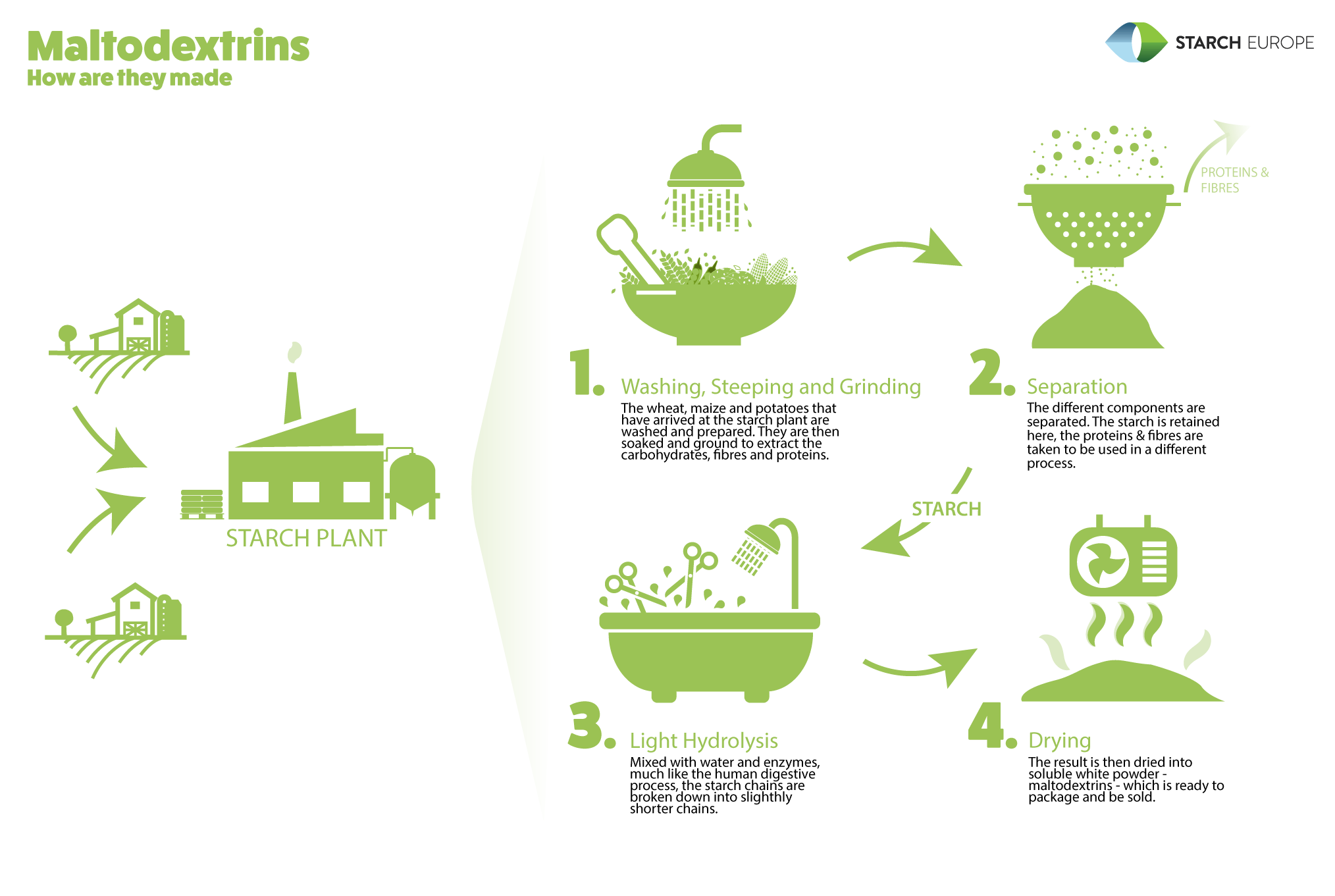Maltodextrins
What is it?
Maltodextrins are plant-based ingredients used in food, obtained from cereals (maize and wheat) and potatoes. They belong to the Carbohydrates family.
Maltodextrins are white powders, neutral in taste with very little or no sweetness. They have a calorific value of 4 kcal/g (similar to all other carbohydrates)..
All maltodextrins are gluten-free.
Maltodextrins are widely used in food formulations and have been for almost half a century.
Maltodextrins are obtained from starch, through a process that uses water to break down carbohydrates into shorter chains of molecules. In essence, enzymes are added to slightly break down the starch molecules – long chains of bound glucose molecules – into shorter chains of glucose molecules, which are then dried. The reaction is similar to the digestion mechanism in the human body when one eats food containing starch (e.g. in pasta or potatoes) but less complete.

(Click on the image to enlarge it)
Where and Why is it used?
Maltodextrins are a good source of energy for humans (including babies and athletes) as they are easily digested in the small intestine and thus energy is quickly available for use by the body. They can also help balance intestinal osmolarity, which may be altered by intestinal disorders in infants. As osmolarity is connected to hydration, maltodextrins help maximise hydration in infants and athletes. Moreover, maltodextrins are well suited for infant nutrition as their solubility ensures a lump-free formula for bottle-feeding and gives infant food milk a perfect consistency.
These plant-based ingredients are commonly used in sports nutrition, both in the preparation and recovery phases, and is a valuable ingredient in many sports drinks.
Maltodextrins have a low level of sweetness, are soluble, and have texturizing, gelling, emulsifying, non-crystallizing properties.
|
Ingredient family |
Maltodextrins |
|
Energy value |
4 kcal/g |
|
Labelling |
Ingredients List: Maltodextrin Nutritional Table: Carbohydrate |